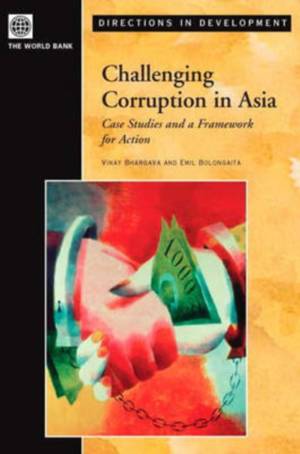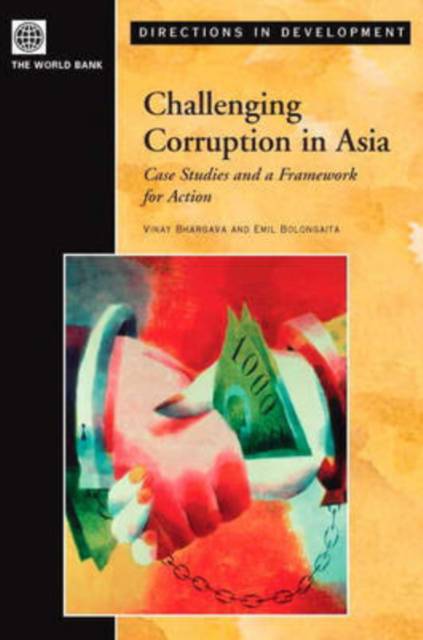
- Afhalen na 1 uur in een winkel met voorraad
- Gratis thuislevering in België vanaf € 30
- Ruim aanbod met 7 miljoen producten
- Afhalen na 1 uur in een winkel met voorraad
- Gratis thuislevering in België vanaf € 30
- Ruim aanbod met 7 miljoen producten
Zoeken
Challenging Corruption in Asia
Case Studies and a Framework for Action
€ 47,45
+ 94 punten
Omschrijving
"Corruption," according to World Bank President James Wolfensohn, "is one of the greatest inhibiting forces to equitable development and to the combating of poverty. For many, it constitutes the difference between life and death." Combating corruption is now high on the policy agenda across Asia. However, many policymakers are handicapped by the lack of useful analytical tools. Existing models have proved inadequate in assessing the relevance and effectiveness of anti-corruption initiatives. Why do some policies and programs work in some countries, and fail in others? What accounts for their success or failure? How can policymakers develop and deliver anti-corruption strategies that work? Challenging Corruption in Asia provides an analytical framework to explore and attempt to answer these questions. Drawing on recent research, the framework outlines a six-step approach to developing effective anti-corruption strategies tailored specifically to a country's pattern of corruption and conditions of governance. Case studies focus on Indonesia, the Philippines, Thailand, and South Korea and illustrate the impact of different patterns of corruption and governance on anti-corruption effectiveness. Emphasis is placed on choosing anti-corruption instruments suited to the governance environment, on the key roles played by anti-corruption champions, especially civil society organizations and the media, and on the need to make information on the extent and perceptions of corruption widely available. A powerful tool for understanding the dynamics of corruption and its impact on developing economies, Challenging Corruption in Asia will be of interest to public policy practitioners and scholars, to the media, and to the broader community of development practitioners.
Specificaties
Betrokkenen
- Uitgeverij:
Inhoud
- Aantal bladzijden:
- 272
- Taal:
- Engels
- Reeks:
Eigenschappen
- Productcode (EAN):
- 9780821356838
- Verschijningsdatum:
- 17/11/2003
- Uitvoering:
- Paperback
- Formaat:
- Trade paperback (VS)
- Afmetingen:
- 170 mm x 213 mm
- Gewicht:
- 458 g

Alleen bij Standaard Boekhandel
+ 94 punten op je klantenkaart van Standaard Boekhandel
Beoordelingen
We publiceren alleen reviews die voldoen aan de voorwaarden voor reviews. Bekijk onze voorwaarden voor reviews.







